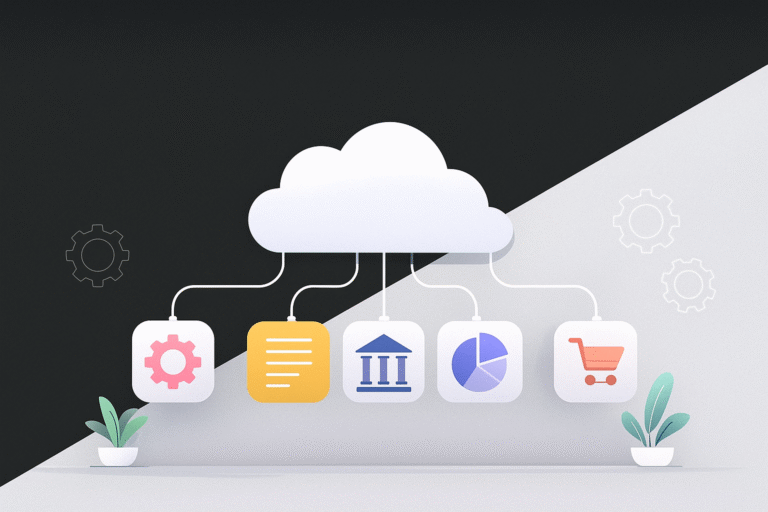Introduction
In today’s fast-paced digital world, the concept of customer service has been dramatically transformed by the advent of hyperautomation. This technological evolution is not just reshaping the operational aspects of customer service but is also redefining the very essence of the customer experience.
Hyperautomation, a term that encompasses a broad array of automation technologies including robotic process automation (RPA), intelligent process automation (IPA), artificial intelligence (AI), and machine learning (ML), promises to revolutionize how businesses interact with their customers, ensuring a seamless, efficient, and highly personalized service experience.
As we delve into the era of hyperautomation, it becomes crucial for businesses to understand its impact on customer service and engagement, and how it can be leveraged to elevate the customer experience strategy to new heights.
The Evolution of Customer Service
The journey of customer service has seen a significant transformation over the years, from the traditional model of in-person and telephonic interactions to the digital-first approach of today. The introduction of robotic process automation (RPA) marked the beginning of this shift, automating routine tasks and freeing up customer service representatives to focus on more complex inquiries. This evolution continued with the advent of intelligent process automation (IPA), which brought a new level of sophistication to automation by incorporating AI and machine learning algorithms.
From Human Agents to Automation
This transition from human-led to technology-driven customer service has not diminished the role of customer service agents; instead, it has enhanced their capacity to deliver more value. By automating mundane tasks, agents are now able to dedicate more time and resources to providing personalized care and support, thereby improving the overall customer service experience.
Hyperautomation: Redefining Customer Service and Engagement
Hyperautomation extends beyond the capabilities of RPA and IPA, integrating various technologies to create a comprehensive automation ecosystem. This holistic approach to automation enables businesses to streamline operations, reduce errors, and deliver a level of customer service that was previously unimaginable.
The Impact on Customer Service Experience
The implementation of hyperautomation technologies has a profound impact on customer service and engagement. Customers now enjoy faster response times, 24/7 support, and personalized interactions, all of which contribute to a superior customer service experience. Additionally, hyperautomation provides businesses with deeper insights into customer preferences and behaviors, allowing for continuous improvement of the customer experience strategy.
The Role of Customer Service Representatives in an Automated World
As the landscape of customer service undergoes profound changes due to hyperautomation, the role of customer service representatives is simultaneously evolving. While automation technologies like robotic process automation and intelligent process automation take over repetitive and time-consuming tasks, the importance of human empathy, understanding, and problem-solving abilities becomes more pronounced than ever. This shift does not render human agents obsolete; instead, it elevates their role, enabling them to focus on areas where human touch significantly impacts customer care and success.
Balancing Automation with Human Touch

The key to maximizing the benefits of hyperautomation lies in striking the right balance between automated efficiency and human empathy. Customer service agents, empowered by automation, can now dedicate more time to understanding and solving complex customer issues, building stronger relationships, and enhancing customer satisfaction. This blend of technology and human interaction ensures that while customers enjoy the efficiency and accuracy of automated services, they also receive the personalized attention and care that only human representatives can provide.
Enhancing Customer Care and Success
In this era of hyperautomation, customer service representatives become more crucial to delivering comprehensive customer care and ensuring customer success. They act as the human face of the brand, interpreting and responding to emotional cues, and providing compassionate support that automation alone cannot achieve. By leveraging detailed insights provided by hyperautomation tools, customer service agents can anticipate customer needs, offer proactive solutions, and create a more personalized and engaging service experience.
This enhanced role of customer service agents highlights the symbiotic relationship between humans and machines. As businesses continue to embrace hyperautomation in customer service, the human element becomes not just a differentiator but a central component of a holistic customer experience strategy, ensuring that every interaction adds value and fosters long-term customer loyalty and satisfaction.
Enhancing Customer Experience Strategy with Hyperautomation
In the era of hyperautomation, developing a customer experience strategy that leverages the full spectrum of automation technologies becomes a pivotal element in achieving superior customer service. Hyperautomation, by integrating robotic process automation, intelligent process automation, and advanced analytics, offers businesses unprecedented opportunities to tailor their service offerings to meet the individual needs of each customer.
Strategic Integration for Personalization

One of the most significant advantages of hyperautomation is its ability to process and analyze vast amounts of data, deriving insights that can inform personalized customer interactions. By understanding customer behaviors, preferences, and previous interactions, businesses can customize their communications, recommendations, and services, enhancing the overall customer service experience. This level of personalization ensures that customers feel valued and understood, directly contributing to increased customer satisfaction and loyalty.
Data Analytics for Improved Customer Understanding
The strategic use of data analytics in hyperautomation allows businesses to continuously refine their customer experience strategy. By identifying trends, preferences, and pain points, companies can proactively adjust their customer service and engagement approaches to better meet customer needs. Intelligent process automation can further enhance this by dynamically adapting interactions based on real-time data, ensuring that customer care evolves at the pace of customer expectations.
Hyperautomation transforms customer service from a reactive, one-size-fits-all approach to a proactive, tailored experience. Businesses that embrace this shift not only streamline their operations but also create a competitive advantage through enhanced customer satisfaction and success. By placing the customer at the center of their hyperautomation strategy, companies can forge stronger, more meaningful connections with their audience, setting a new standard for customer service in the digital age.
Measuring Success: Customer Satisfaction in the Hyperautomated Era
In the landscape shaped by hyperautomation, where customer service and engagement are rapidly evolving, measuring customer satisfaction becomes both a challenge and a necessity. Hyperautomation, with its integration of robotic process automation, intelligent process automation, and advanced analytics, offers new metrics and tools for gauging the effectiveness of customer service strategies. Yet, at the heart of these technologies, the ultimate goal remains unchanged: to enhance customer satisfaction and ensure customer success.
The Importance of Tracking Customer Satisfaction

Customer satisfaction is the cornerstone of business success in any era. In the context of hyperautomation, the ability to quickly and accurately assess customer feedback across multiple touchpoints becomes a powerful tool for businesses. It allows them to identify strengths and areas for improvement in their customer service automation efforts. Regularly monitoring customer satisfaction metrics ensures that companies can remain agile, making data-driven decisions to refine their customer experience strategy continually.
Leveraging Hyperautomation for Enhanced Feedback Collection
Hyperautomation enables businesses to implement sophisticated systems for collecting and analyzing customer feedback. Through intelligent process automation, companies can automate surveys, feedback forms, and social media monitoring, gathering insights into customer perceptions and experiences at scale. This real-time feedback loop empowers businesses to make immediate adjustments to their customer service approaches, ensuring that they are consistently meeting and exceeding customer expectations.
Furthermore, advanced analytics play a crucial role in deciphering the vast amounts of data collected through automated processes. By applying machine learning algorithms, businesses can uncover deep insights into customer behavior, satisfaction levels, and loyalty drivers. These insights not only inform strategic decisions but also enable personalized customer engagements that further enhance satisfaction and success.
Adapting to Customer Needs with Agility
The dynamic nature of customer expectations in the digital age requires businesses to be more adaptable than ever. Hyperautomation provides the tools and insights necessary for companies to respond swiftly to changing customer needs and preferences. By closely monitoring customer satisfaction metrics, businesses can align their customer service automation strategies with customer demands, ensuring that the customer experience remains at the forefront of their operational priorities.

In conclusion, the era of hyperautomation presents both opportunities and challenges in measuring and enhancing customer satisfaction. By leveraging the advanced capabilities of automated technologies, businesses can develop a nuanced understanding of their customers, tailor their services to meet individual needs, and maintain a continuous cycle of improvement. This commitment to measuring and acting on customer feedback is essential for driving customer success and achieving long-term business growth in the hyperautomated future.
Conclusion
As we navigate through the transformative landscape of the digital age, the role of hyperautomation in customer service has become undeniably central to shaping the future of customer experiences. This technological revolution, marked by the synergy of robotic process automation, intelligent process automation, and advanced analytics, is not merely a trend but a fundamental shift in how businesses interact with their customers. The era of hyperautomation promises a new horizon of possibilities, where customer service is not just about resolving queries but about crafting memorable, personalized experiences that resonate with customers on a deeper level.
A New Paradigm of Customer Engagement
The journey towards embracing hyperautomation is a testament to the evolving dynamics of customer service and engagement. Businesses that recognize the potential of integrating advanced automation technologies into their customer service operations stand at the forefront of this new paradigm. By automating routine tasks and leveraging data analytics for personalized interactions, companies can significantly enhance the efficiency and quality of their customer service, setting a new benchmark for customer satisfaction.
The Human Element in a Hyperautomated World
Despite the impressive capabilities of hyperautomation, it is crucial to remember the irreplaceable value of the human touch in customer service. The evolution of customer service representatives’ roles, from task executors to strategic customer care and success facilitators, underscores the symbiotic relationship between technology and human empathy. As we harness the power of hyperautomation, fostering a culture that balances automation with genuine human engagement will be vital in delivering a customer service experience that truly stands out.
Navigating the Future with Customer-Centric Hyperautomation
Looking ahead, the future of customer service and engagement in the era of hyperautomation is bright with opportunities for innovation and growth. Businesses that adopt a customer-centric approach to hyperautomation, tailoring their strategies to meet the unique needs and expectations of their customers, will thrive. The key to success lies in continuously monitoring and adapting to customer feedback, ensuring that every technological advancement enhances the customer journey.
A Call to Action for Businesses
As we reflect on the transformative impact of hyperautomation on customer service, the call to action for businesses is clear. To remain competitive and relevant in this rapidly changing landscape, embracing hyperautomation is not an option but a necessity. However, this journey requires more than just adopting new technologies; it demands a strategic vision that places customer satisfaction at the heart of business operations. By investing in hyperautomation and
fostering a culture of innovation and empathy, businesses can unlock unprecedented levels of customer engagement and satisfaction.
In conclusion, the era of hyperautomation presents a unique opportunity to redefine the essence of customer service. By leveraging the power of advanced technologies while preserving the human connection, businesses can create a customer service experience that is not only efficient and personalized but also deeply meaningful. The future belongs to those who recognize the potential of hyperautomation to transform customer service from a functional necessity into a strategic asset that drives customer success and business growth.





